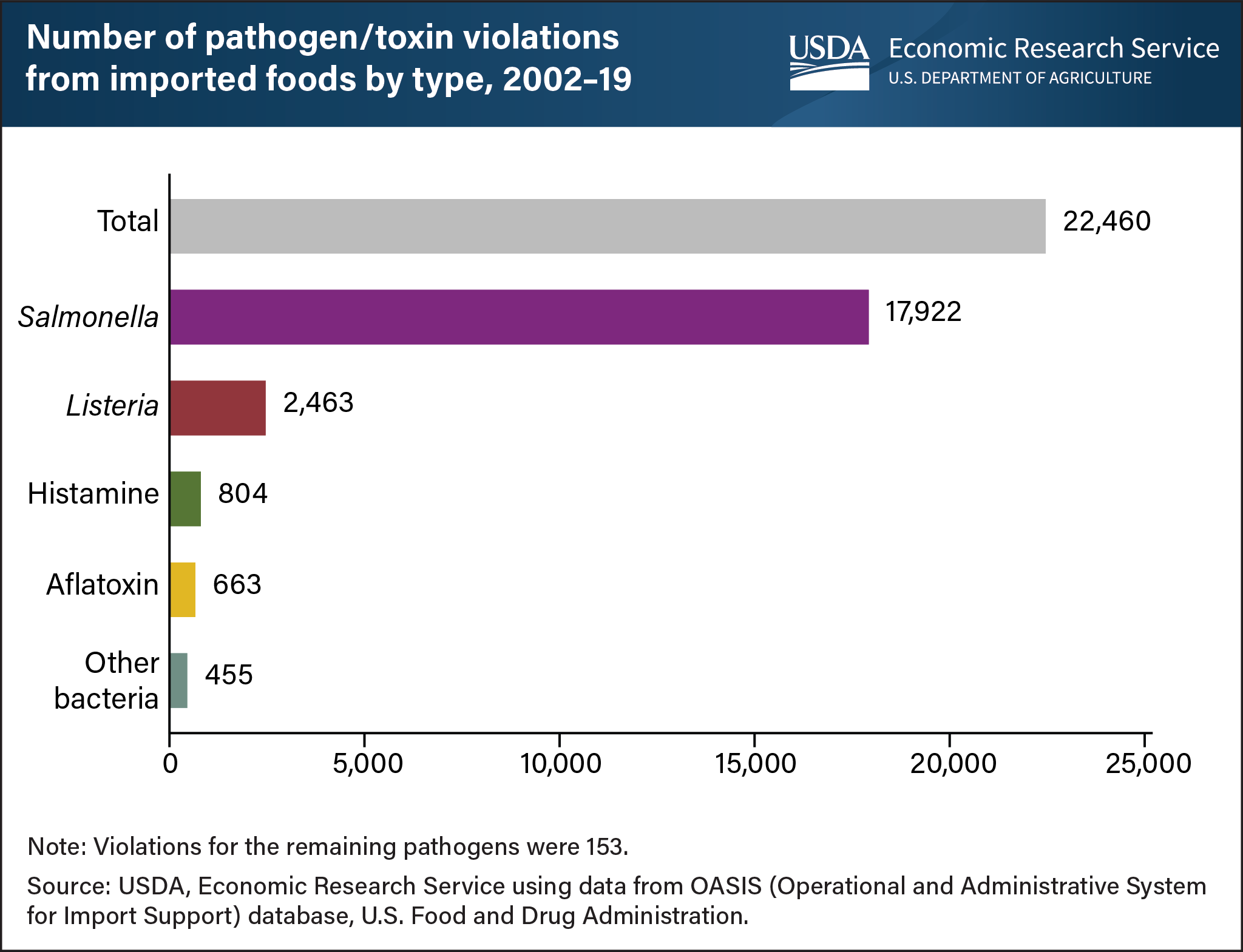USDA: Salmonella Causes Most Pathogen-Based Import Violations, 2002–2019

A recent study by the U.S. Department of Agriculture (USDA) Economic Research Service (ERS) examined U.S. pathogen-based food import refusals from 2002–2019. An analysis of these refusals sheds light on trends which can help defend the U.S. food supply from contaminants that cause foodborne illnesses.

- 17,922, or 80 percent, were caused by Salmonella
- 2,463, or 11 percent, were caused by Listeria monocytogenes
- 804, or 3.6 percent, were caused by histamine
- 663, or 3 percent, were caused by aflatoxin
- 455, or 2 percent, were caused by other bacteria.
Original analysis of the study revealed a number of other trends related to pathogen-based import violations. Notably, Salmonella violations peaked in 2011, then declined. L. monocytogenes violations decreased from 2003–2008 until a spike in 2010, followed by a slight decrease over time. In comparison to the previous ERS study of pathogen and toxin import violations from 1998–2004, Salmonella violations increased from 63 percent, and L. monocytogenes violations decreased from 24.8 percent.
Additional trends reported include refusals by food industry group and country of origin. Respectively, the most frequent offenders were fishery and seafood products with 44.1 percent of violations and India with 22.9 percent of violations. Salmonella was the most common cause of pathogen-based violations from both the fishery and seafood industry and from India.
It is important to note that FDA’s import refusal dataset, on which the study was conducted, does not include detailed records for the volume of shipments inspected. Shipment inspection was limited to a small number of imports based on prior history, and since screening authorities’ standards may have changed over time, it is not possible to assess which factors affected the refusals from the USDA ERS report.
Looking for quick answers on food safety topics?
Try Ask FSM, our new smart AI search tool.
Ask FSM →








